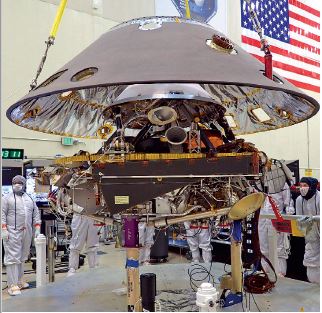European Space Workforce
European Space Industry Employment
2019 TSRQ1 – Workforce: U.S. Space Workforce


The global space industry employs hundreds of thousands of highly-skilled individuals to design, produce, and operate cutting-edge technology. This workforce, in turn, contributes to thriving local economies, with clusters of innovative companies and service support industries. Understanding trends . . .
2017 – European Space Industry Employment
In 2016, the European space workforce included 40,419 individuals, according to Eurospace, the European space industry association. Eurospace conducts annual surveys of European firms involved in the design, development, and manufacturing of space assets. It does not include workers associated with the space services industry, including well-known…
2015 – European Space Industry Employment – Snapshot
Data on the European space workforce is collected annually via surveys by Eurospace, an association of the European space manufacturing industry. The survey focuses on design, development, and…
2015 – European Space Industry Employment – Snapshot
The European space workforce included 38,435 workers in 2015, according to Eurospace, an association of the European space manufacturing industry. Eurospace conducts annual surveys of European firms involved…
Workforce: Space Workforce – TSR 2015
2014 – European Space Industry Employment
Each year, Eurospace, an association of the European space manufacturing industry, carries out a survey of the European space industry. The survey focuses on design, development, and manufacturing; it does not include companies specializing in space services, such as launch or satellite operations, nor non-space products, such as GPS receivers or satellite TV dishes. Some well-known European space companies, including Arianespace, SES Global, Eutelsat, and Inmarsat, are thus not included in the survey. Together, these companies would add thousands of employees.
Workforce: Workforce and Education – TSR 2014
2013 – European Space Industry Employment
Space employment in Europe has increased for the seventh year in a row, adding about ## employees from 2011 to 2012, an increase of ##%. European space employment is ##% greater than its 10-year low in 2005. Unlike the data for the U.S. space workforce, which is estimated using nationally collected data not specifically designed to capture the space industry, data on the European space workforce has been collected via a targeted survey of European space companies carried out by a not-for-profit organization, Eurospace. In carrying out this survey, Eurospace focuses on manufacturing activities and measuring end-market value.
2012 – European Space Industry Employment
The European space workforce includes workers from ## European countries across three segments of the industry: spacecraft, launch, and ground. The five countries with the largest workforces, France, Germany, Italy, the United Kingdom, and Spain, accounted for more than ##% of the total European space workforce in 2011. The workforce numbers include industries involved in designing, developing, and manufacturing space systems in the spacecraft, launch, and ground sectors. The numbers do not include the workforce of companies developing consumer devices, such as GPS or satellite television receivers, nor do they include employment by companies that carry out space services based on the exploitation of space assets, such as launch service providers.